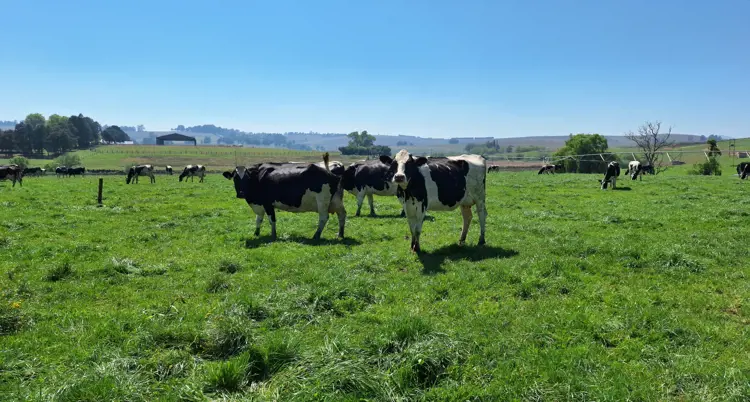Navigating the Autumn Slump: Strategies for Sustaining Milk Production in Dairy Cows
As the summer heat gives way to the cooler temperatures of autumn, the dairy industry grapples with the lingering effects of seasonal transitions. One of the primary contributors to a decline in milk production during this period is the stress induced by calving in the summer. Here's a detailed look at the reasons behind this decline:

• Reduced Milk Peaks: Cows that calve during the summer experience a noticeable 2 to 4.5kg reduction in milk peaks compared to other times of the year. This lower peak during early lactation sets the stage for decreased overall production yields throughout the lactation period.
• Heat Stress Impact: The challenges of calving in the summer months extend beyond reduced milk peaks. Cows that calved early in the summer find it challenging to overcome the lingering effects of heat stress, impacting their productivity well into the autumn months.
• Long-lasting Effects: The repercussions of calving stress in summer persist, affecting the overall health and milk production of the herd. This underscores the importance of addressing these issues with thoughtful and strategic interventions.
As autumn sets in, additional challenges emerge, exacerbating the decline in milk production.
• The gradual shortening of daylight hours becomes a pivotal factor. This change is associated with a reduction in pasture growth and quality, as cows spend less time grazing. Moreover, variations in daylight duration can impact hormonal patterns in cows, influencing reproductive cycles and subsequently affecting milk yield. Studies suggest that milk production tends to be highest during exposure to 16 to 18 hours of daily bright light.
• Basic energy requirements for dairy cows also undergo a shift in autumn as they prepare for winter. This period witnesses a rise in energy needs driven by the elevation of basal metabolism, the growth of a winter coat, and the storage of fat under the skin for insulation against the impending cold.
• The quality of feed changes the transition from summer to autumn. The degradation of Kikuyu in pastures as summer progresses into autumn leads to reduced palatability and digestibility, resulting in decreased intakes. Dry matter intake is crucial for maintaining milk production, and the decline in the quality of available pasture necessitates alternative sources. Maize silage is commonly employed to bridge this gap, but its effectiveness depends on proper ensiling and fermentation processes.
Addressing the decline in milk production demands a comprehensive approach. Sustainable, long-term strategies that encompass adjustments in nutrition, management practices, and overall herd health monitoring are key.
The question then: How do we navigate the Autumn slump. From experience, I can propose the following strategies:
• Replanting for Autumn: Focus on replanting irrigated rye and clover early to ensure availability and quantity during autumn.
• Grazing Choices: opt for younger, less fibrous Kikuyu for better quality and digestibility.
• Diversify Pasture Species: Incorporate tall fescue, plantain, chicory, and lucerne to supplement Kikuyu, ensuring quality protein availability.
• Maize Silage Management: Plan to safeguard enough maize silage from the previous season. Ensure correct dry matter content (32-35%) and proper kernel processing for energy-dense and digestible silage.
• Digestible Fiber Options: Explore options like soy hulls, lucerne hay, and brewers’ grains to fill nutritional gaps, ensuring their quality is known before incorporation.
• Balanced Rations: Feed the correct meal in the parlour, complementing the roughage menu to optimize cow performance.
• Stocking Rates: Review and adjust stocking rates, focusing on the correct age at first calving to manage green feed availability for milking cows.
• Strategic Pasture Use: Utilize excess pasture during spring or early summer by wrapping or baling roughage sources to maintain low costs and ensure a reserve for times of need, such as autumn.
While the autumn slump is an inevitable challenge for every dairy farmer, including pasture or total Mixed ration system, these strategies offer a proactive and informed approach to mitigate its effects. With the looming El Niño, effective roughage management becomes increasingly critical not only for autumn but also for the upcoming year. By adopting these practices, dairy farmers can navigate the seasonal fluctuations and sustain milk production levels, ensuring the well-being of their herds and the success of their operations.
Contact your local De Heus technical advisor to help identify potential weak points in your fodder flow management and prepare for the Autumn season - https://www.deheus.co.za/meet-our-team/.
